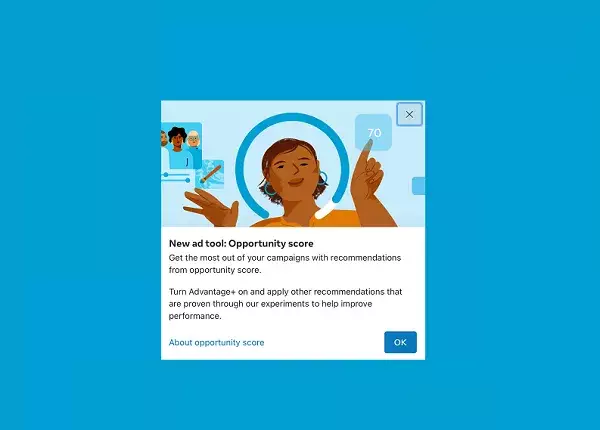In a digital landscape where advertising strategies evolve rapidly, advertisers seek more precise tools to enhance their campaign effectiveness. Meta’s introduction of the “Opportunity Score” serves as a significant step forward in leveraging artificial intelligence to optimize ad performance. This innovative metric provides a comprehensive score between 0 and 100, distilling a campaign’s potential for success based on Meta’s extensive data insights. The real game-changer? It not only evaluates current setups but also offers actionable recommendations that can guide advertisers toward improved outcomes.
Understanding the Opportunity Score
At its core, the Opportunity Score assesses how well an advertising campaign is configured to meet various performance metrics. This assessment hinges on the implementation of Meta’s recommended strategies, which tackle crucial areas such as ad formatting, policy compliance, and overall effectiveness. These guidelines are not arbitrary; they stem from experimental data that demonstrate which strategies yield better results. By adopting these recommendations, advertisers can witness tangible improvements, as indicated by Meta’s report of a 5% median reduction in costs per result during initial trials. However, it’s crucial for advertisers to approach this tool with a discerning eye, as success is not guaranteed and results can vary.
Real-Time Recommendations: A Double-Edged Sword
While the Opportunity Score offers near real-time feedback, its efficacy largely depends on how attentively advertisers engage with the provided insights. Each recommendation is tailored based on an understanding of what has typically succeeded among various advertisers on the platform. Nonetheless, it’s essential to consider that this adaptability may not universally apply. The effectiveness of recommendations will vary based on the industry, target audience, and ad objectives. Thus, while they represent a valuable resource, exercising judgment in implementing these suggestions is essential for achieving optimal outcomes.
Potential Pitfalls and Strategic Considerations
As enticing as the Opportunity Score may sound, it also necessitates a critical outlook on its limitations. Relying solely on automated recommendations can lead to a complacency in strategic thinking. Advertisers should blend data-driven insights with creative intuition and market understanding. The existence of a scoring system may inadvertently pressure users into hastily adjusting campaigns based on metrics rather than their overall vision or brand identity. This dynamic can risk diluting authenticity and may detract from long-term strategies focused on building customer relationships.
A Call to Action for Advertisers
For those looking to maximize their advertising potential, engaging with Meta’s Opportunity Score could represent a lucrative path towards refining campaigns. By balancing automation with personalization, businesses can harness AI-driven insights while maintaining the essence of their brand. The real value lies in not merely pursuing a higher score but in understanding and strategically implementing the recommendations that resonate most with their goals. As Meta continues to expand access to this tool, the potential for enhanced ad performance beckons. It’s an opportune time for advertisers to take the plunge into this new frontier of digital marketing, ensuring they remain astute in both analysis and creativity.

